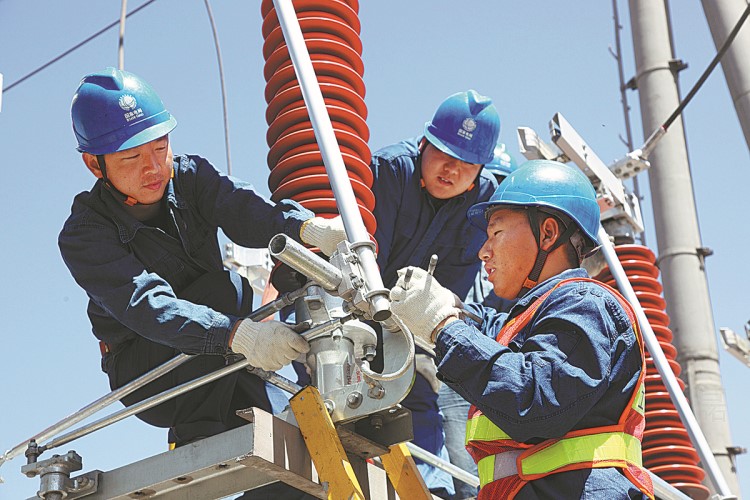Going Green: Industry base points way for low-carbon transition


Energy employees work on power grid equipment in the Ningdong Energy and Chemical Industry Base. [Photo provided to China Daily]
Key development zone
Ningdong has long been identified as a national key development zone, with its large-scale fuel production base including coal, chemical and other crucial resources in the Yellow River basin area of northern China feeding the country's increasing energy needs.
By the end of the 13th Five-Year Plan (2016-20) period, Ningdong, which covers 3,500 square kilometers, achieved a regional GDP of 48 billion yuan ($7.55 billion), with an average annual compound growth rate of 9.5 percent.
The region's total industrial output exceeded 130 billion yuan, with its industrial added value growing 11.3 percent annually, making it the only chemical industrial park with output exceeding 100 billion yuan in Northwest China, according to government figures. More than 160 enterprises, including 12 companies with annual output of over 1 billion yuan each, have set up in the base.
In recent years, Ningdong has geared up its coal liquefaction capabilities to process solid coal into liquid fuel, in order to better meet energy demand by increasing the efficiency of regional fossil fuel reserves. The site has become the largest coal liquefaction and coal-based synthetic materials manufacturing facility of its kind in the country, boasting production capacity of 4 million metric tons by 2020.
With coal consumption expected to peak soon, the region is increasingly tapping its strengths in solar, wind and hydrogen energy and other green sectors.
By 2025, generation capacity for wind and solar power alone is set to exceed 50 million kilowatts, accounting for more than 55 percent of local installed capacity, while power output from the two renewable sources will hit 80 billion kilowatts and make up more than 30 percent of the total energy mix, according to regional authorities.
The moves are expected to help regional GDP hit 70 billion yuan, at an average annual growth rate of over 10 percent, with total industrial output value reaching 260 billion yuan and average annual industrial added value growing more than 12 percent.
Tao Shaohua, deputy secretary of the Party working committee of the Ningdong base and director of the base's management committee, said the area's green transition involves using its natural energy resources more efficiently and sustainably. It will also build on its fuel production capabilities to take advantage of the latest industry developments, in line with environmental priorities such as the protection of key water resources from the Yellow River, which flows through the region.
"We have always adhered to long-term, stable development, firmly forming our industry capabilities and expertise through major projects and investments," Tao said.
"To successfully meet the challenges of a low-carbon future, we will need to continue focusing on technological progress and talent attraction, tapping expertise and experience in the region and beyond, to keep up with the latest green trends toward the next necessary stages of high-end development."











.png)
.png)
.png)





